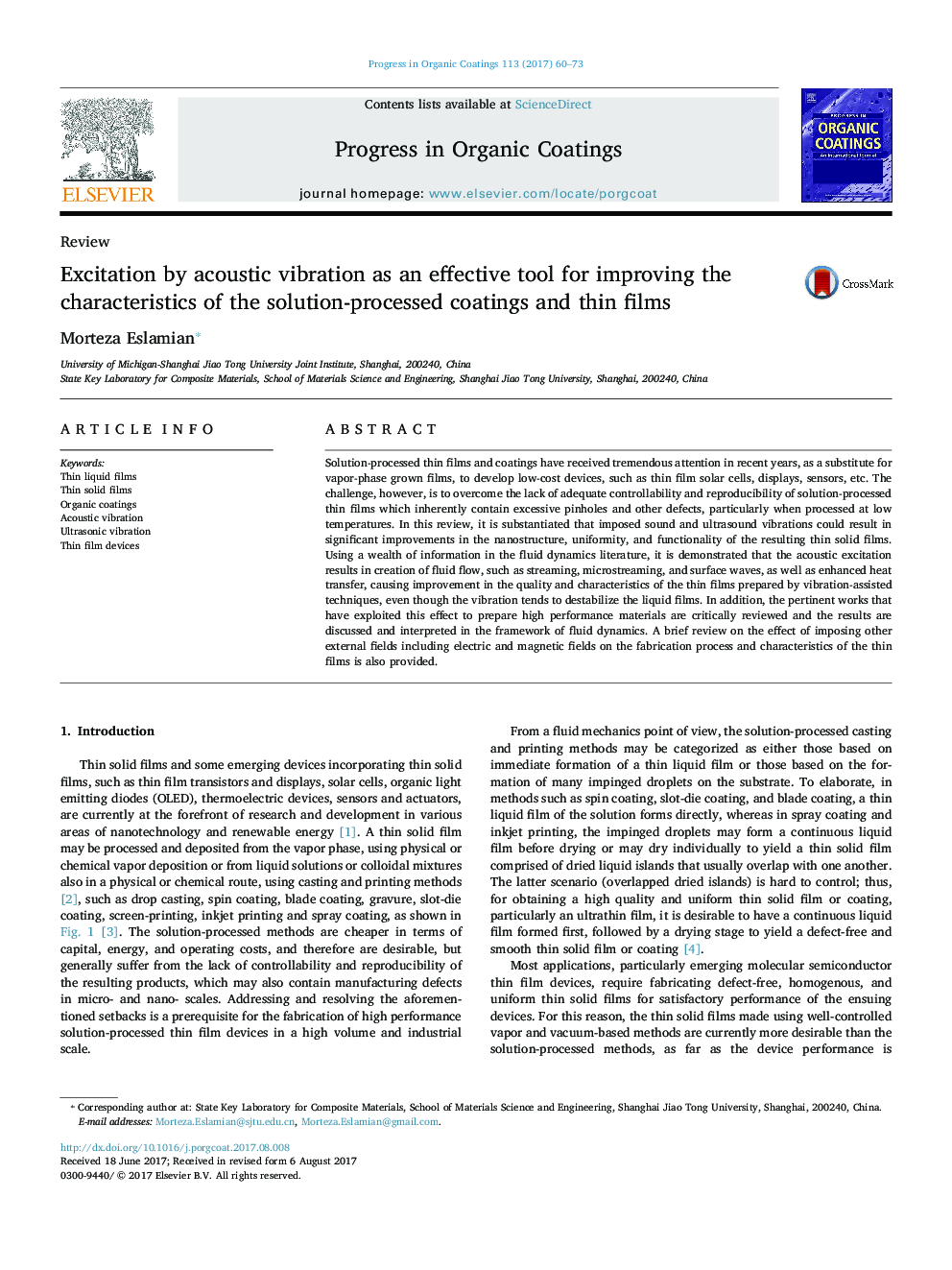| Article ID | Journal | Published Year | Pages | File Type |
|---|---|---|---|---|
| 4999096 | Progress in Organic Coatings | 2017 | 14 Pages |
Abstract
Solution-processed thin films and coatings have received tremendous attention in recent years, as a substitute for vapor-phase grown films, to develop low-cost devices, such as thin film solar cells, displays, sensors, etc. The challenge, however, is to overcome the lack of adequate controllability and reproducibility of solution-processed thin films which inherently contain excessive pinholes and other defects, particularly when processed at low temperatures. In this review, it is substantiated that imposed sound and ultrasound vibrations could result in significant improvements in the nanostructure, uniformity, and functionality of the resulting thin solid films. Using a wealth of information in the fluid dynamics literature, it is demonstrated that the acoustic excitation results in creation of fluid flow, such as streaming, microstreaming, and surface waves, as well as enhanced heat transfer, causing improvement in the quality and characteristics of the thin films prepared by vibration-assisted techniques, even though the vibration tends to destabilize the liquid films. In addition, the pertinent works that have exploited this effect to prepare high performance materials are critically reviewed and the results are discussed and interpreted in the framework of fluid dynamics. A brief review on the effect of imposing other external fields including electric and magnetic fields on the fabrication process and characteristics of the thin films is also provided.
Keywords
Related Topics
Physical Sciences and Engineering
Chemical Engineering
Process Chemistry and Technology
Authors
Morteza Eslamian,
